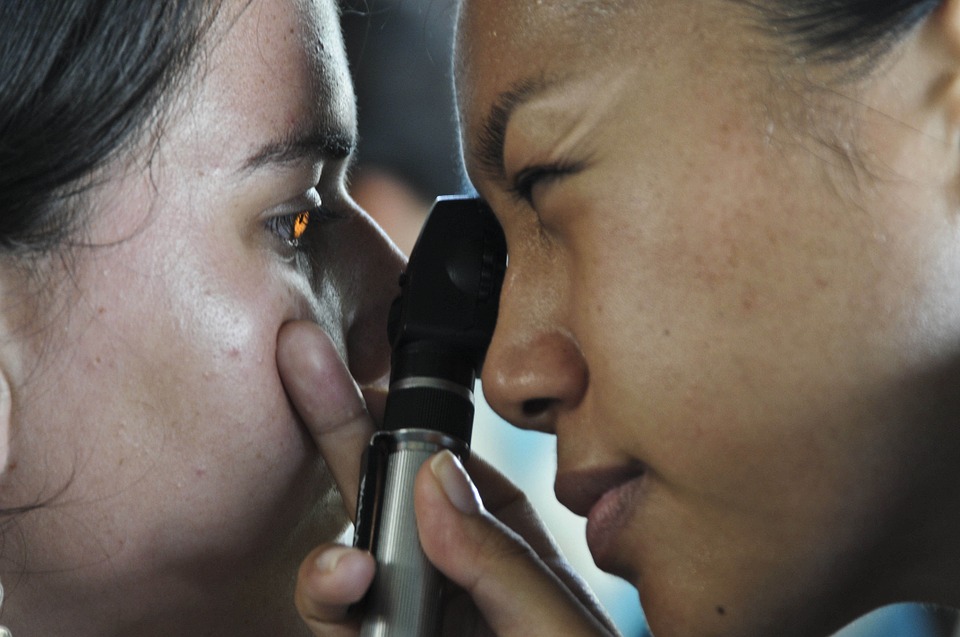 Eye turns, crossed eyes, wall-eyes, wandering eyes, deviating eye, and more. These common terms are often associated with strabismus, an eye condition that causes one eye to turn in another direction when the patient is focused on a particular object. The eyes should work together as a team, but when one eye veers off in another direction, it could be a sign of strabismus.
Eye turns, crossed eyes, wall-eyes, wandering eyes, deviating eye, and more. These common terms are often associated with strabismus, an eye condition that causes one eye to turn in another direction when the patient is focused on a particular object. The eyes should work together as a team, but when one eye veers off in another direction, it could be a sign of strabismus.
According to the American Association for Pediatric Ophthalmology and Strabismus, approximately 4% of Americans have crossed eyes or some other type of strabismus. So what causes strabismus and how can it be corrected? Strabismus surgery is the option many turn to if they have been experiencing deviating eyes. Let’s take a look at strabismus, what may cause it, and how strabismus surgery can correct the problem.
Causes and Symptoms of Strabismus
Strabismus can develop for a variety of reasons, but the most common causes are from genetics, problems with the brain’s fusion center, and muscular or nerve injuries. While adults can develop crossed eyes, this condition is often discovered in babies and is much easier to treat early on. Common symptoms for both adults and children could include headaches, eye strain, unstable vision, or fatigue or discomfort while reading.
Diagnosing Strabismus
Eye care professionals diagnose strabismus when they ask patients to focus their eyes on an object in the distance (about 20 feet away), something nearby (about 13-16 inches away), and by looking up, down, left, and right. While some patients may experience constant strabismus, others may only become cross-eyed intermittently, such as when they are ill or in a stressful situation. Eye doctors can determine if the problem is caused by the patient’s glasses or if it’s an issue with the brain. Prism glasses are recommended for some, while others, who have more of a brain-related problem, may need to undergo surgery to correct the wandering eye.
Strabismus Surgery
Before surgery begins, the surgeon needs to determine which muscles are contributing to the wandering eye and which muscles need to be strengthened or weakened to assist in aligning the eye. In this preoperative test, the surgeon will use prisms to measure the degree of strabismus, which will assist in coming up with the best plan of action during the procedure.
Children undergoing surgery are required to be under general anesthesia, while adults can use either local or general. During surgery, the eyelids are held open and an opening is created on the conjunctiva. Based on the preoperative tests, the muscles are either strengthened, weakened or moved to correct strabismus. While the procedure itself only takes one to two hours, patients will be at the surgery site for a few hours as well for postoperative recovery. Because this is a common surgery most patients experience quick recovery and improved alignment.
Our Care
In April, Everett and Hurite’s Pamela Huston and Dr. Darren Hoover presented their latest research on eye muscle surgery at the American Association of Pediatric Ophthalmology and Strabismus meeting in Nashville, Tennessee. A majority of eye muscle surgeries involve weakening the eye muscles and strengthening others, but Huston and Hoover presented a different approach. The folding, also known as plication, of a rectus eye muscle is an alternative method of care that is not used frequently. Through research, Huston and Hoover discovered that success rates were similar, but re-operation rates were lower for patients receiving the plication procedure. This method takes less time, is less painful, and lowers risks of further damage to the patient. The presentation is a great example of how Everett and Hurite considers the latest research and seeks out better care as a whole for our patients.
Concerned about your eye health after experiencing some of the symptoms above? Do you think you may need strabismus surgery? Do you have concerns about your upcoming surgery? Everett and Hurite’s staff can assist you with questions about strabismus and any other eye concerns you may have. Schedule an appointment by contacting us today!
